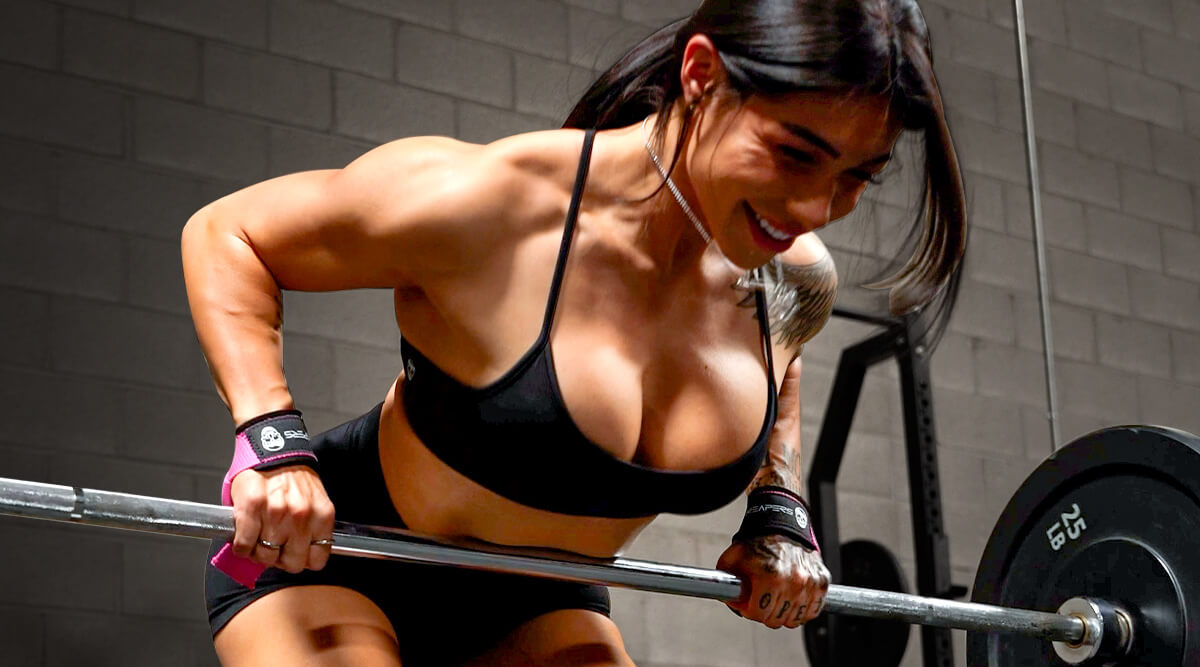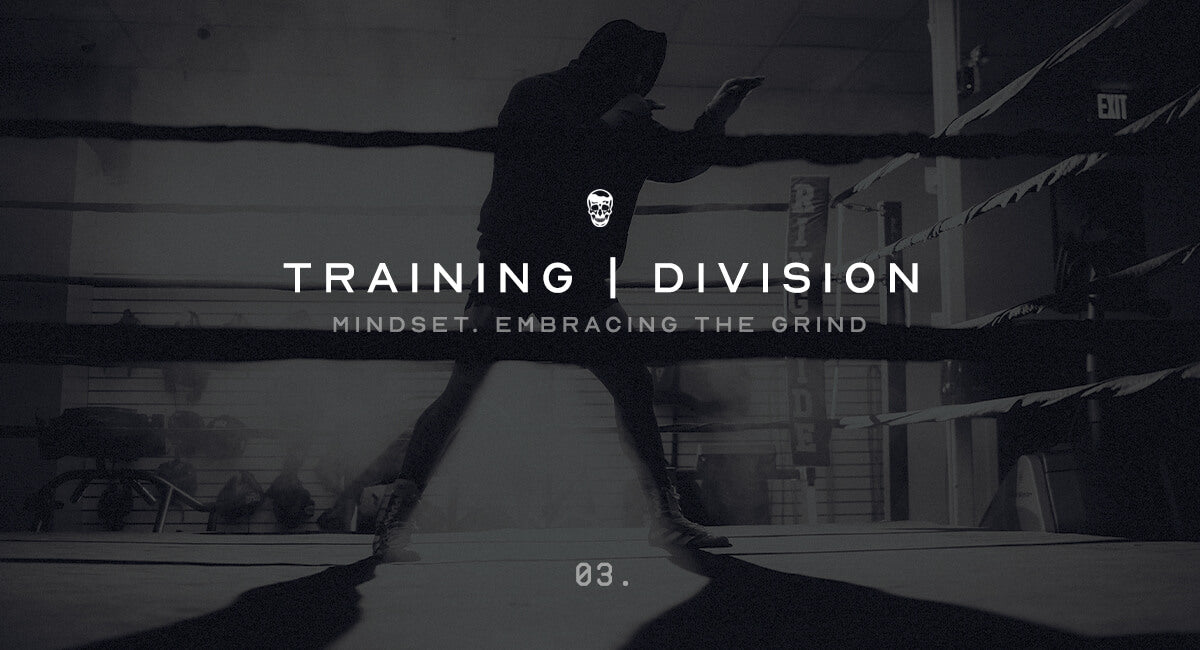Today, we're diving into an intense back and biceps workout session with Gymreapers athletes Jack West and Gabby Fortune. If you're looking to build a stronger back and sculpted biceps, you're in the right place.
This workout is packed with expert tips and effective techniques to elevate your back and biceps training regimen.
We'll walk you through the key exercises and methods demonstrated by Jack and Gabby. From mastering the perfect pull-up to fine-tuning your barbell and dumbbell rows, we've got everything you need to power up your back and biceps game. So, let's get ready to break down each move and uncover the secrets to their killer workout!
Overview: Back and Biceps Workout Routine
- Pull-Ups: 2 sets, max reps
- Barbell Bow: 3 sets, 10-12 reps
- Dumbbell Rows: 2-3 sets, 20-30 reps
- Dumbbell Biceps Superset: 3 sets
- Alternating Curls: 10 reps per arm
- Strict Curls: 12 reps
- Hammer Curls: 12 reps
Pull-Ups
Starting your workout with a proper warm-up is crucial, especially when targeting major muscle groups like your back and biceps. Jack and Gabby kick things off with pull-ups, a foundational exercise that effectively activates and warms up the back muscles.
Importance of Warming Up the Back Muscles
Warming up your back muscles with pull-ups helps increase blood flow, enhance flexibility, and prepare your muscles for the more intense exercises to follow. This initial activation is essential for preventing injuries and ensuring that you can perform at your best throughout the workout.
Alternatives for Those Who Struggle with Pull-Ups
If you find pull-ups challenging, don’t worry! There are excellent alternatives to help you build strength and work towards mastering this exercise. Gabby suggests using a resistance band to assist with pull-ups. Simply loop the band over the bar and place your feet in the band to reduce the weight you need to lift. Alternatively, many gyms have assisted pull-up machines that provide adjustable support to help you perform the exercise with proper form.
By incorporating these variations, you can gradually build the necessary strength and technique to perform unassisted pull-ups, ensuring a solid foundation for your back workout.

Barbell Rows
Proper Technique
Barbell rows are a staple in any back workout, and Jack and Gabby share their insights on performing this exercise with optimal form. The key to effective barbell rows lies in maintaining the right body positioning and engaging your back muscles correctly.
Emphasis on Low Hip Positioning and Engaging the Back Muscles
Jack emphasizes the importance of positioning your hips low and pointing them back during barbell rows. This posture helps isolate the back muscles, ensuring they bear the brunt of the work rather than allowing other muscle groups to take over. Keeping your back flat and bracing your core throughout the movement is essential for maximizing engagement and preventing injuries.
Tips to Avoid Common Mistakes
One common mistake lifters make is standing too upright, which can lead to the involvement of other muscles, such as the shoulders and lower back. To counter this, Jack advises resetting your position after each rep to maintain a low hip angle and direct the weight to your lower chest. This technique not only targets the back muscles more effectively but also minimizes the risk of strain on other parts of the body.

Hand Positioning
Optimal Hand Placement
When performing barbell rows, hand placement can significantly influence the muscles engaged during the exercise. Jack prefers a grip slightly wider than shoulder-width, which he finds optimal for activating the back muscles.
Consistency in Form to Maximize Back Muscle Engagement
Maintaining consistent form is crucial for getting the most out of your barbell rows. Ensure that each rep follows the same movement pattern, pulling the bar towards your lower chest without using your lower back or other muscle groups to cheat the lift. This consistency not only enhances muscle engagement but also promotes muscle growth and strength over time.
By following these tips and focusing on proper technique, you can make the most of your barbell rows and build a stronger, more defined back.
Lifting Straps
Types and Benefits
Lifting straps are a valuable tool for enhancing your back and biceps workouts, allowing you to lift heavier weights and maintain a stronger grip. Jack and Gabby discuss the different types of lifting straps and share their personal experiences to help you choose the right ones for your training needs.
Different Types of Lifting Straps and Their Specific Uses
There are several types of lifting straps available, each with unique features designed for specific uses. The most common types include:
- Loop Straps: These are versatile and can be used for a variety of exercises, including deadlifts, rows, and pull-ups. They are easy to wrap around the bar and provide a secure grip.
- Figure 8 Straps: These are ideal for heavy lifting, especially for exercises like deadlifts. They offer a strong and stable grip, making it easier to handle significant weights without worrying about grip fatigue.
- Hook Straps: These come with built-in hooks that latch onto the bar, reducing the strain on your hands and wrists. They are perfect for beginners or those recovering from grip-related injuries.

Suggested Lifting Straps and Grips
Advantages of Using Lifting Straps: Enhance Grip and Lift Heavier Weights
Using lifting straps can significantly improve your performance, especially on heavy lifting days. They help you maintain a firm grip on the bar, allowing you to focus more on your form and less on your grip strength. This can lead to better muscle engagement and growth, as you can lift heavier weights and perform more reps without your grip giving out.
Lifting straps also reduce the risk of injuries related to grip fatigue, such as dropped weights or strained wrists. By providing extra support, they enable you to train more intensely and safely, maximizing your gains in strength and muscle mass.
Personal Preferences and Experiences with Different Straps
Jack and Gabby share their personal preferences when it comes to lifting straps. Jack prefers traditional loop straps, having used them since his middle school days. He finds them easy to use and reliable for various exercises. Gabby, on the other hand, highlights the convenience of different strap types depending on the exercise. She mentions how figure 8 straps are particularly useful for heavy deadlifts, while loop straps work well for most other lifts.
Both athletes agree on the importance of choosing straps that feel comfortable and suit your specific needs. It's all about finding what works best for you and incorporating them into your workouts to enhance your lifting performance.
By understanding the types and benefits of lifting straps, you can make an informed decision and add a valuable tool to your training arsenal, helping you lift heavier and achieve your fitness goals more efficiently.

Dumbbell Rows
Variation and Technique
After completing barbell rows, Jack and Gabby transition to dumbbell rows, an excellent exercise for targeting the back muscles from a different angle and adding variety to your workout.
Transition from Barbell Rows to Dumbbell Rows
Dumbbell rows offer a distinct advantage over barbell rows by allowing for a greater range of motion and unilateral training, which can help address muscle imbalances.
Preferred Dumbbell Methods
Gabby prefers using an incline bench for dumbbell rows, which helps in maintaining the correct posture and getting into the right position. This method also reduces the strain on the lower back, allowing for a more focused engagement of the upper back muscles. Although the incline bench might feel a bit sketchy at times, it effectively supports her form and enhances the exercise's effectiveness.
Jack, however, likes to perform his dumbbell rows in a more upright position. He finds that this method allows for better engagement of the back muscles and feels more natural. He also emphasizes pulling the dumbbell to the lower chest, similar to barbell rows, to maximize back muscle activation.

High-Rep Sets
Incorporating high-rep sets to failure is a technique both athletes use to enhance muscle endurance and promote hypertrophy.
Incorporating High-Rep Sets to Failure for Muscle Endurance and Hypertrophy
Jack recommends performing high-rep sets after the initial heavy sets. This involves dropping the weight and doing two sets to failure, aiming for 20 to 30 reps. This technique increases muscle endurance and stimulates muscle growth by pushing the muscles to their limits. Gabby echoes this approach, noting that while it might seem counterintuitive to go lighter, the high-rep sets effectively fatigue the muscles and contribute to overall muscle development.
Both Jack and Gabby agree that maintaining form is crucial, even during high-rep sets. They advise keeping the same consistent motion and avoiding sloppy reps, as maintaining good form ensures the right muscles are targeted and reduces the risk of injury.
By incorporating dumbbell rows into your routine and utilizing high-rep sets, you can add variety to your workout, address muscle imbalances, and achieve better muscle endurance and hypertrophy.

Dumbbell Bicep Superset
Superset Structure
The bicep superset introduced by Jack and Gabby is a powerful routine designed to maximize bicep engagement and promote muscle growth through varied movements. This superset combines alternating curls, strict curls, and hammer curls, providing a comprehensive workout for the biceps. Below is a detailed Breakdown of the Bicep Superset.
Alternating Curls
- Reps: 10 reps per arm (20 reps total)
- How to: Begin with a moderate weight that you can handle comfortably. Alternate curls involve lifting one dumbbell at a time, allowing for a focused contraction on each bicep. This movement helps in isolating the biceps and promoting muscle symmetry.
Strict Curls
- Reps: 12 reps
- How to: After completing the alternating curls, drop the weight and pick up a lighter set of dumbbells. Perform strict curls with both arms simultaneously, keeping your elbows close to your body. This variation emphasizes strict form and reduces momentum, ensuring maximum bicep engagement.
Hammer Curls
- Reps: 12 reps
- How to: Finish the superset with hammer curls using a heavier weight. Hammer curls involve holding the dumbbells with a neutral grip (palms facing each other) and lifting them simultaneously. This exercise targets the brachialis muscle and adds thickness to the upper arm.

Suggested Weights and Rep Ranges
- Alternating Curls: Start with a moderate weight, such as 25 pounds, that allows you to perform the exercise with proper form.
- Strict Curls: Use a lighter weight, around 20 pounds, to maintain strict form and focus on the biceps.
- Hammer Curls: Choose a heavier weight, such as 35 pounds, to challenge the biceps and forearms.
Adjust the weights according to your fitness level and ensure you can complete the prescribed reps with good form.

Related Article: Top Bicep Workouts for Muscle Growth
Conclusion
In conclusion, the back and biceps workout featuring Gymreapers athletes Jack West and Gabby Fortune provides valuable insights into effective training techniques and exercises to target these muscle groups effectively. Here's a recap of the main points covered in the session:
- Warm-Up and Pull-Ups: Starting with pull-ups or using alternative methods like bands or assisted pull-up machines helps to activate the back muscles and prepare them for the workout ahead.
- Barbell Rows: Proper technique, including maintaining a low hip position and consistent hand placement, maximizes back muscle engagement during barbell rows.
- Lifting Straps: Using lifting straps can enhance grip strength and allow for heavier lifts, improving overall workout performance.
- Dumbbell Rows: Transitioning to dumbbell rows offers a different angle of attack for the back muscles, with variations like incline bench rows providing added benefits.
-
Dumbbell Bicep Superset: The bicep superset combining alternating curls, strict curls, and hammer curls targets the biceps comprehensively, promoting muscle growth and definition.
Final Tips and Encouragement
As you incorporate these techniques into your own workouts, remember to prioritize intensity and consistency. Push yourself to challenge your limits while maintaining proper form to ensure optimal results. Don't hesitate to try different techniques and adjust based on your personal comfort and progress. Each body is unique, so find what works best for you and keep pushing towards your fitness goals.













1 comment
Marvin Yeager
Hi, Due to my shoulder injury I sustained several years ago I’ve had to focus on keeping all my reps evenly balanced. I switched to machines and it has helped. Now I’m ready to start doing “free weight” curls again. Low weight of course I don’t want to go backwards and injure my shoulder again. I was wondering how I could work my dumbbells back in and keep correct form. Big thank you for this video, I was kind of at a wall not sure what I could actually incorporate into my routine – curl wise. Gabby and Jack gave me some great ideas and now Im going to work hammer curls into my routine to start with then work in alternating curls. I also like the speed of the sets and weight they were using – intensity. Thanks y’all!!
Thank you
Marvin Yeager
Leave a comment
All comments are moderated before being published.
This site is protected by hCaptcha and the hCaptcha Privacy Policy and Terms of Service apply.